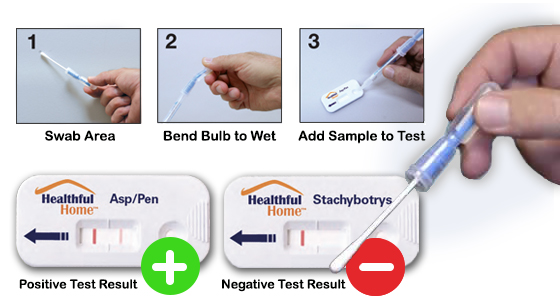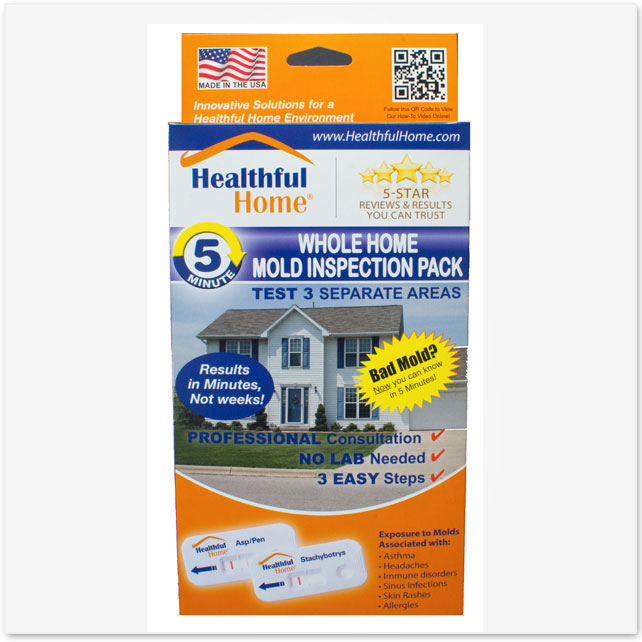Boost Your Safety Protocols with Professional Mycotoxin testing Services
The Need of Mycotoxin Examining in Agricultural Products to Ensure Consumer Security
The need of mycotoxin screening in agricultural products is an essential aspect of public health and wellness and safety and security that requires extensive assessment. Mycotoxins, toxic substances generated by certain fungis, can penetrate numerous crops, resulting in considerable health and wellness risks for consumers, such as cancer causing effects and body organ damage. Normal mycotoxin screening not just removes and identifies infected products from the supply chain however additionally ensures conformity with safety and security standards and enhances consumer depend on. Recognizing the methods and advantages of such screening is necessary to completely value its significance in guarding our food supply.
Understanding Mycotoxins
Mycotoxins, hazardous second metabolites produced by specific fungis, offer a substantial risk to farming products and human health and wellness. These substances are created by numerous species of mold and mildews, such as Aspergillus, Fusarium, and Penicillium, which can infect plants both pre- and post-harvest - Mycotoxin testing Services. The most typical mycotoxins consist of aflatoxins, ochratoxin A, fumonisins, zearalenone, and deoxynivalenol (DON)
Mycotoxin contamination can take place under specific ecological problems, such as high moisture and temperature, which prefer the growth of mold. Agricultural items like grains, nuts, flavors, dried fruits, and coffee are particularly susceptible. The visibility of mycotoxins in these products can lead to considerable economic losses due to decreased plant returns and the necessity for extensive screening and purification procedures.
Understanding the biochemical nature and development of mycotoxins is important for developing reliable mitigation strategies. Study has actually shown that mycotoxins show a variety of chemical structures and homes, making detection and removal challenging. Advanced logical methods, including chromatography and mass spectrometry, are made use of to determine and quantify mycotoxins in farming products, making certain that contamination levels continue to be within risk-free limits developed by regulatory bodies.
Wellness Risks of Mycotoxins
Offered the significant threats connected with mycotoxins in farming products, understanding their effect on health and wellness is paramount. Mycotoxins, hazardous second metabolites created by fungis, position extreme dangers to both human and animal wellness. Chronic direct exposure, even at reduced levels, can result in an array of unfavorable wellness effects, consisting of immunosuppression, carcinogenicity, and teratogenicity. Aflatoxins, amongst one of the most well-known mycotoxins, are classified as Group 1 health hazards by the International Company for Study on Cancer Cells (IARC), largely affecting the liver and raising the danger of hepatocellular cancer.
Severe mycotoxin poisoning, although much less typical, can cause severe and prompt illness such as liver damage, stomach disruptions, and hemorrhaging. Ochratoxin A, an additional powerful mycotoxin, is connected to kidney damages and has prospective carcinogenic impacts. On the other hand, fumonisins, mostly impacting maize, are related to esophageal cancer and neural tube problems.

Common Sources of Contamination
Comprehending the usual resources of contamination is vital for properly managing and alleviating the threats posed by mycotoxins. Mycotoxins are harmful second metabolites produced by certain kinds of fungis, which can contaminate agricultural items at various phases of processing, manufacturing, and storage space. The main resources of contamination include field problems, post-harvest handling, and storage space atmospheres.
Area conditions play a substantial function, with factors like weather, crop susceptibility, and dirt wellness affecting fungal growth. Plants such as corn, peanuts, wheat, and tree nuts are specifically prone to mycotoxin-producing fungis like Aspergillus, Fusarium, and Penicillium types. Inadequate plant turning and bad insect management can exacerbate the threat of contamination.
Post-harvest handling is an additional critical phase where contamination can take place. Mechanical damage during harvesting and transport produces entrance points for fungis, while incorrect drying methods can leave wetness levels high sufficient to support fungal development.
Storage environments add dramatically to contamination dangers. Poorly kept storage centers with high humidity and temperature degrees create ideal problems for mycotoxin production. Normal examinations and appropriate storage problems are crucial in her latest blog curbing this risk.
Mycotoxin Examining Methods
Reliable management of mycotoxin contamination pivots not only on identifying possible resources but likewise on executing robust screening techniques to spot these unsafe substances. Mycotoxin screening approaches can be generally classified right into chromatographic and immunochemical methods. High-performance fluid chromatography (HPLC) and gas chromatography-mass spectrometry (GC-MS) stand for advanced chromatographic approaches recognized for their high sensitivity and accuracy. These techniques are adept at measuring multiple mycotoxins in complicated matrices, making them important for extensive evaluation.
On the other hand, enzyme-linked immunosorbent assay (ELISA) and lateral flow assays project immunochemical approaches. ELISA, specifically, is widely utilized as a result of its cost-effectiveness, ease of use, and rapid turn-around time. Side flow assays give quick, on-site testing capabilities, making them suitable for field applications where immediate decisions are required.
Furthermore, improvements in molecular biology have actually presented PCR-based approaches with the ability of finding mycotoxin-producing fungis at hereditary degrees, supplying an anticipating approach to contamination risk. Integrating these varied techniques enhances the reliability and comprehensiveness of mycotoxin detection, making certain that agricultural products satisfy security requirements and shielding customers from possible wellness risks.
Advantages of Routine Checking

Regular mycotoxin testing supplies considerable advantages that dramatically strengthen farming safety and security and quality. One of the primary advantages is the defense of customer health and wellness. Mycotoxins, poisonous compounds generated by certain fungis, can contaminate food and position severe health threats, consisting of cancer cells and acute poisoning. Routine screening guarantees that infected items do not reach consumers, consequently mitigating health and wellness dangers.
Furthermore, regular browse around this web-site testing aids in keeping the integrity and track record of farming manufacturers. By rigorously checking and controlling mycotoxin degrees, producers can prevent costly recalls and lawful effects. This not just guarantees conformity with rigorous worldwide safety and security standards yet also promotes customer count on and commitment.

Final Thought
The need of mycotoxin screening in farming items is underscored by the significant health dangers positioned by these harmful compounds. Ensuring customer security calls for the recognition and elimination of infected items from the supply chain. Routine testing not just reduces the risk of severe poisoning and chronic health and wellness issues yet also supports compliance with safety requirements. Furthermore, it enhances the credibility of producers and promotes trust within the farming supply chain, ultimately protecting public health and wellness.
The requirement of mycotoxin screening in farming products is an important facet of public health and security that warrants thorough exam. Mycotoxins, poisonous substances produced by particular fungi, can penetrate various plants, leading to considerable wellness risks for customers, such as carcinogenic impacts and body organ damages.Mycotoxins, harmful secondary metabolites created by specific fungi, provide a substantial risk to agricultural products and human health and wellness.Provided the considerable risks linked with mycotoxins in agricultural items, comprehending their effect on health is vital (Mycotoxin testing Services).The necessity of mycotoxin testing in farming products is highlighted by go to website the substantial health dangers posed by these harmful substances